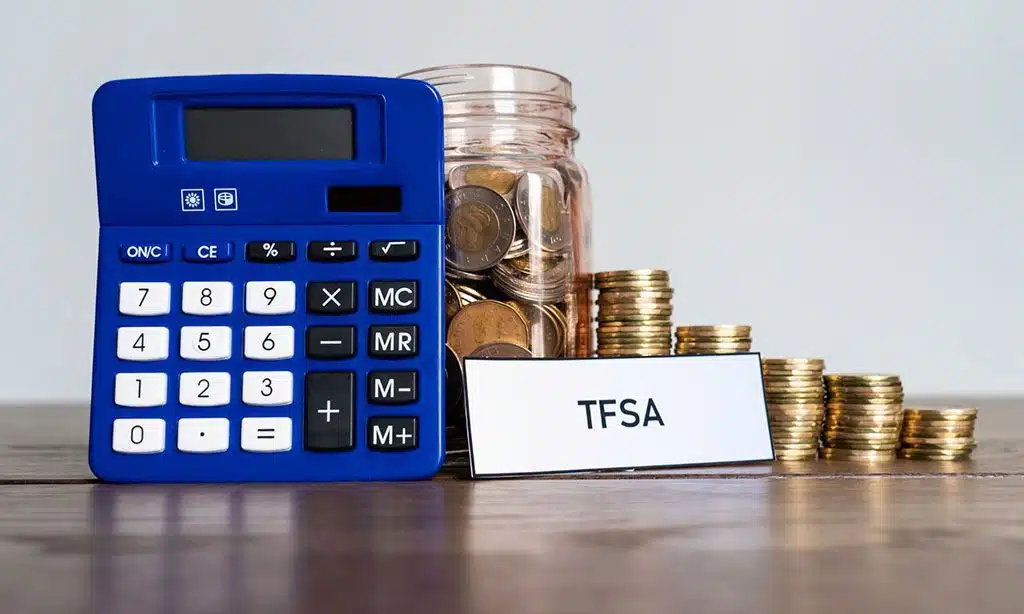Tax season often brings a mix of anticipation and apprehension for Canadians. With 2025 approaching, strategic planning can help reduce your taxable income while growing your wealth.
By leveraging tax-efficient investment opportunities, you can make the most of available credits, deductions, and exemptions.
In this guide, we’ll explore ten smart investments tailored to provide maximum tax benefits in Canada for 2025, ensuring your financial goals align with your tax-saving strategies.
What Are Tax Benefits, and Why Are They Important?
Tax benefits reduce the amount of taxable income or offer credits to offset taxes owed.
These advantages encourage individuals to save, invest, and contribute to societal goals such as education and renewable energy.
For example, programs like Registered Retirement Savings Plans (RRSPs) and Tax-Free Savings Accounts (TFSAs) allow you to build wealth while minimizing your tax obligations.
In Canada, tax benefits can range from deductions for retirement savings to credits for charitable donations, providing significant relief for taxpayers while fostering economic growth.
Key Changes in Tax Policies for 2025
The Canadian government periodically updates tax policies to reflect economic and societal needs. For 2025, key changes include:
- Enhanced contribution limits for registered savings plans.
- New incentives for green energy investments.
- Adjustments to tax brackets to reflect inflation.
For instance, the RRSP contribution limit has increased, enabling Canadians to save more while reducing taxable income. These updates underscore the importance of proactive planning to maximize benefits.
Top 10 Investments for Tax Benefits in Canada
Investing wisely not only helps you grow your wealth but also provides significant tax advantages.
This section outlines ten strategic investment options tailored to reduce your taxable income while aligning with your financial goals.
From retirement savings to eco-friendly initiatives, these investments are designed to offer a balance of growth and tax efficiency, ensuring you make the most of Canada’s tax-saving opportunities.
1. Registered Retirement Savings Plan (RRSP)
An RRSP is a cornerstone of tax-efficient investing in Canada. Contributions to an RRSP are tax-deductible, reducing your taxable income.
Additionally, investments within the RRSP grow tax-deferred until withdrawal, typically during retirement when you may fall into a lower tax bracket.
For those nearing retirement, the ability to contribute a significant portion of income to an RRSP offers immediate and long-term financial advantages.
Key Benefits:
- Contribution limits for 2025: $30,780 or 18% of earned income, whichever is lower.
- Spousal RRSPs allow income splitting, reducing overall tax liability.
Pro Tip: Begin contributing early in the year to maximize compound growth. Align contributions with high-income years to optimize tax deductions.
RRSP Contribution and Tax Savings
| Income Level | Contribution Amount | Tax Savings (Assuming 30% Rate) |
| $60,000 | $10,000 | $3,000 |
| $100,000 | $18,000 | $5,400 |
2. Tax-Free Savings Account (TFSA)
A TFSA offers tax-free growth on contributions, making it ideal for short- and long-term savings.
Unlike RRSPs, withdrawals from a TFSA are tax-free, providing flexibility. For younger investors, the TFSA is an excellent tool to build wealth while maintaining liquidity.
Key Benefits:
- Annual contribution limit for 2025: $6,500.
- Suitable for investments like stocks, bonds, and ETFs.
Actionable Tip: Consider high-growth investments like equities within your TFSA to maximize tax-free returns over time.
TFSA Growth Over 10 Years (Assuming 6% Annual Return)
| Year | Annual Contribution | Total Contributions | Projected Value |
| 1 | $6,500 | $6,500 | $6,890 |
| 10 | $6,500/year | $65,000 | $89,000 |
3. Registered Education Savings Plan (RESP)
An RESP provides tax-sheltered growth for Education Savings, coupled with government grants such as the Canada Education Savings Grant (CESG).
Parents can save for their child’s post-secondary education while benefitting from compounded growth over time.
Key Benefits:
- Lifetime contribution limit: $50,000 per beneficiary.
- CESG: 20% match on contributions up to $2,500 annually.
- Investment options include mutual funds, GICs, and ETFs.
Example Use Case: A family contributing $2,500 annually to an RESP for 18 years can amass over $73,000 in savings, aided by CESG contributions and investment growth.
RESP Growth with CESG (Assuming 5% Annual Return)
| Year | Annual Contribution | CESG Amount | Total Value (Projected) |
| 1 | $2,500 | $500 | $3,150 |
| 18 | $2,500/year | $9,000 | $73,000 |
4. First Home Savings Account (FHSA)
Introduced recently, the FHSA combines the benefits of TFSAs and RRSPs, allowing first-time homebuyers to save for their first home with tax-deductible contributions and tax-free withdrawals.
This account is designed to make homeownership more attainable for young Canadians.
Key Benefits:
- Contribution limit: $8,000 annually, up to $40,000 lifetime.
- Flexibility to transfer unused funds to an RRSP.
Real-Life Insight: Saving the maximum $40,000 within an FHSA can significantly reduce your dependency on mortgages, saving thousands in interest payments over time.
FHSA Savings for a Home (Assuming 4% Annual Return)
| Year | Annual Contribution | Total Contributions | Projected Value |
| 1 | $8,000 | $8,000 | $8,320 |
| 5 | $8,000/year | $40,000 | $44,000 |
5. Dividend-Paying Stocks
Investing in Canadian dividend-paying stocks can provide lower tax rates on eligible dividends compared to regular income.
These stocks are a popular choice for generating passive income while benefiting from favorable tax treatment.
Key Benefits:
- Tax credits reduce the effective tax rate on dividends.
- Ideal for building a steady income stream.
Pro Tip: Look for dividend aristocrats—companies with a history of consistently increasing dividends.
Tax Savings on Eligible Dividends
| Dividend Amount | Tax Without Credit | Tax With Credit |
| $1,000 | $300 | $150 |
| $5,000 | $1,500 | $750 |
6. Green Energy Investments
With the government emphasizing sustainability, green energy investments offer tax credits and grants to promote eco-friendly initiatives.
Homeowners and businesses can also benefit from rebates on energy-efficient upgrades.
Key Benefits:
- Tax credits for investments in solar, wind, and geothermal energy projects.
- Rebates for energy-efficient home improvements.
Green Energy Investment Tax Credits
| Investment Type | Eligible Tax Credit | Additional Benefits |
| Solar Panel Systems | 15% | Reduced energy bills |
| Geothermal Heating | 20% | Lower maintenance costs |
7. Real Estate Investment Trusts (REITs)
REITs provide exposure to real estate without owning physical property. They offer tax advantages as distributions often qualify for the dividend tax credit.
For investors looking for diversification, REITs offer a balance of income and growth.
Key Benefits:
- Tax-efficient income from real estate.
- Diversification without direct property ownership.
Actionable Tip: Combine REITs with stocks and bonds for a diversified portfolio.
REIT Returns vs. Rental Property
| Investment Type | Initial Investment | Annual Income | Tax Rate |
| REITs | $10,000 | $600 | 15% |
| Rental Property | $100,000 | $6,000 | 25% |
8. Small Business Investments
Investing in Canadian small businesses provides access to unique tax benefits like the Lifetime Capital Gains Exemption (LCGE). This incentive encourages entrepreneurship and supports local economic growth.
Key Benefits:
- Exemption on the first $971,190 of capital gains (2025 threshold).
- Tax credits for angel investors.
- Real-Life Example: Investing in a start-up through crowdfunding platforms can yield significant long-term gains while supporting innovation.
9. Charitable Donations
Donating to registered charities offers tax credits that reduce your tax payable. Strategic giving, such as donating appreciated securities, can maximize tax savings.
Key Benefits:
- Federal and provincial credits: 15% on the first $200 and 29% on amounts over $200.
- Strategic donations of securities avoid capital gains tax.
10. Life Insurance Policies
Certain life insurance policies can be used as tax-efficient investment tools. The cash value grows tax-free, and the death benefit is non-taxable, making these policies a cornerstone of estate planning.
Key Benefits:
- Tax-deferred growth on investment components.
- Estate planning benefits for beneficiaries.
Takeaway
Strategic investments can significantly reduce your tax burden while helping you achieve financial milestones. From RRSPs and TFSAs to green energy initiatives, each option offers unique advantages.
By aligning your financial goals with tax-efficient strategies and consulting professionals, you can make 2025 a year of smart financial growth.
Start planning today to reap the rewards of well-informed decisions.










































